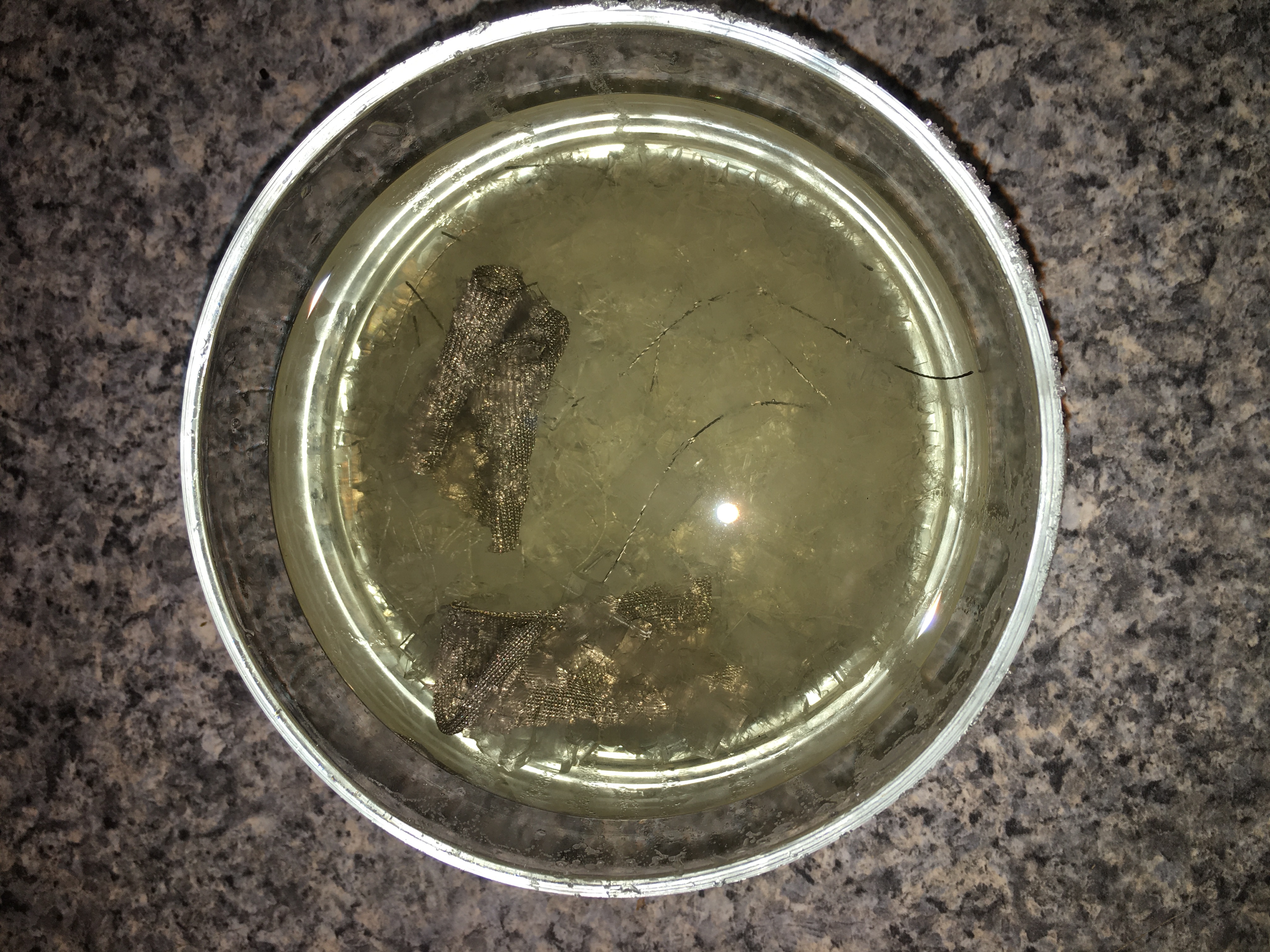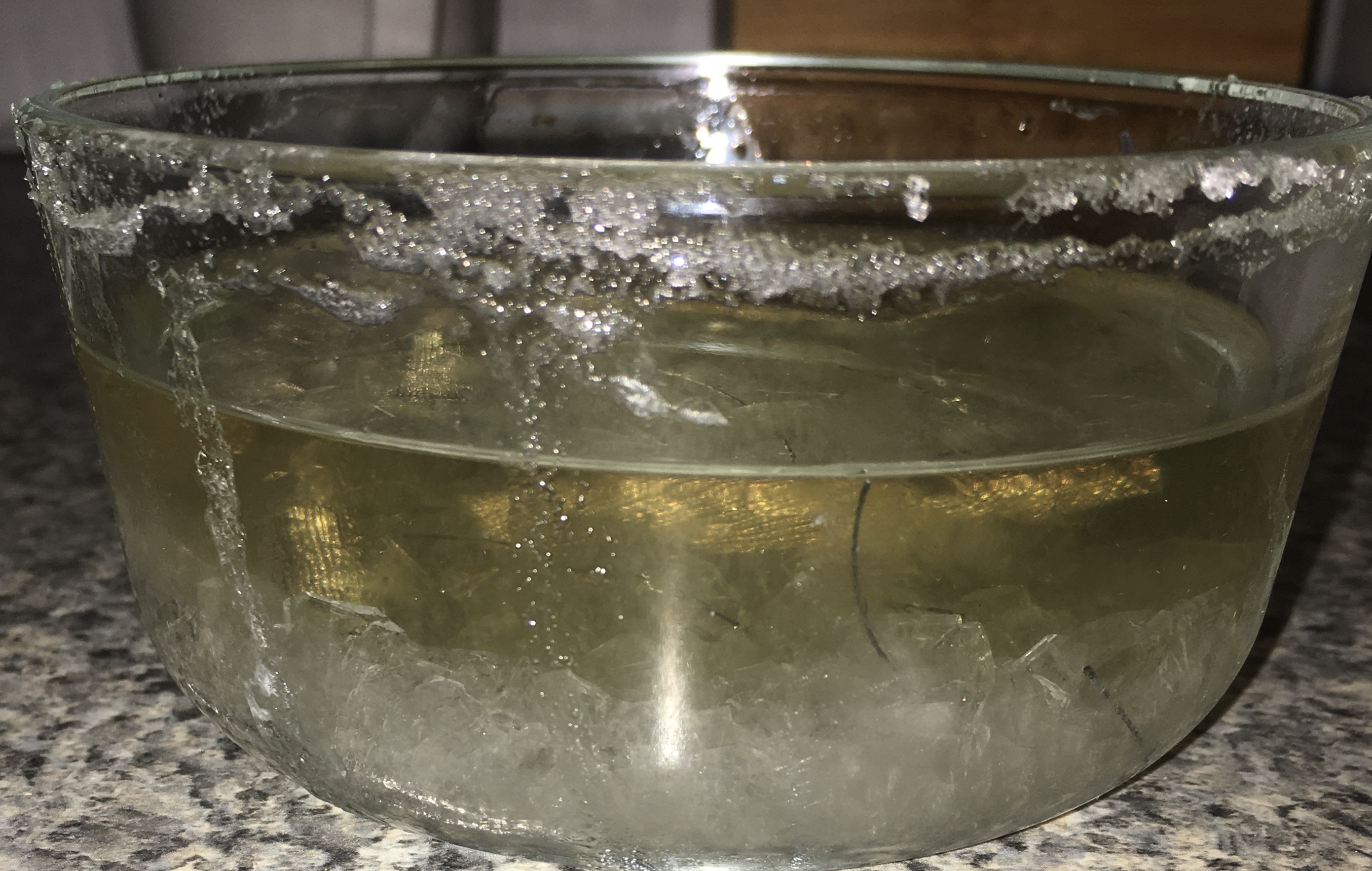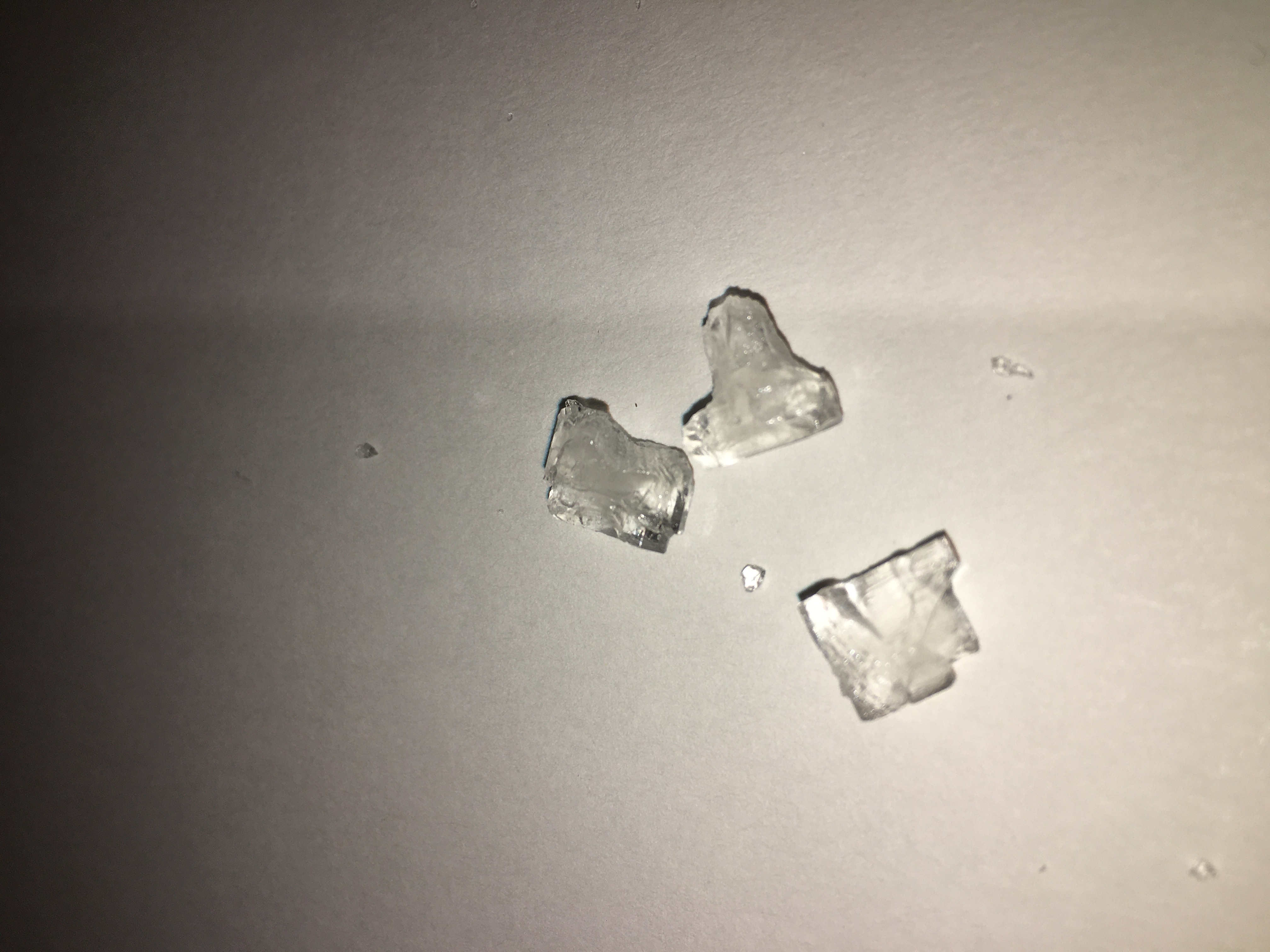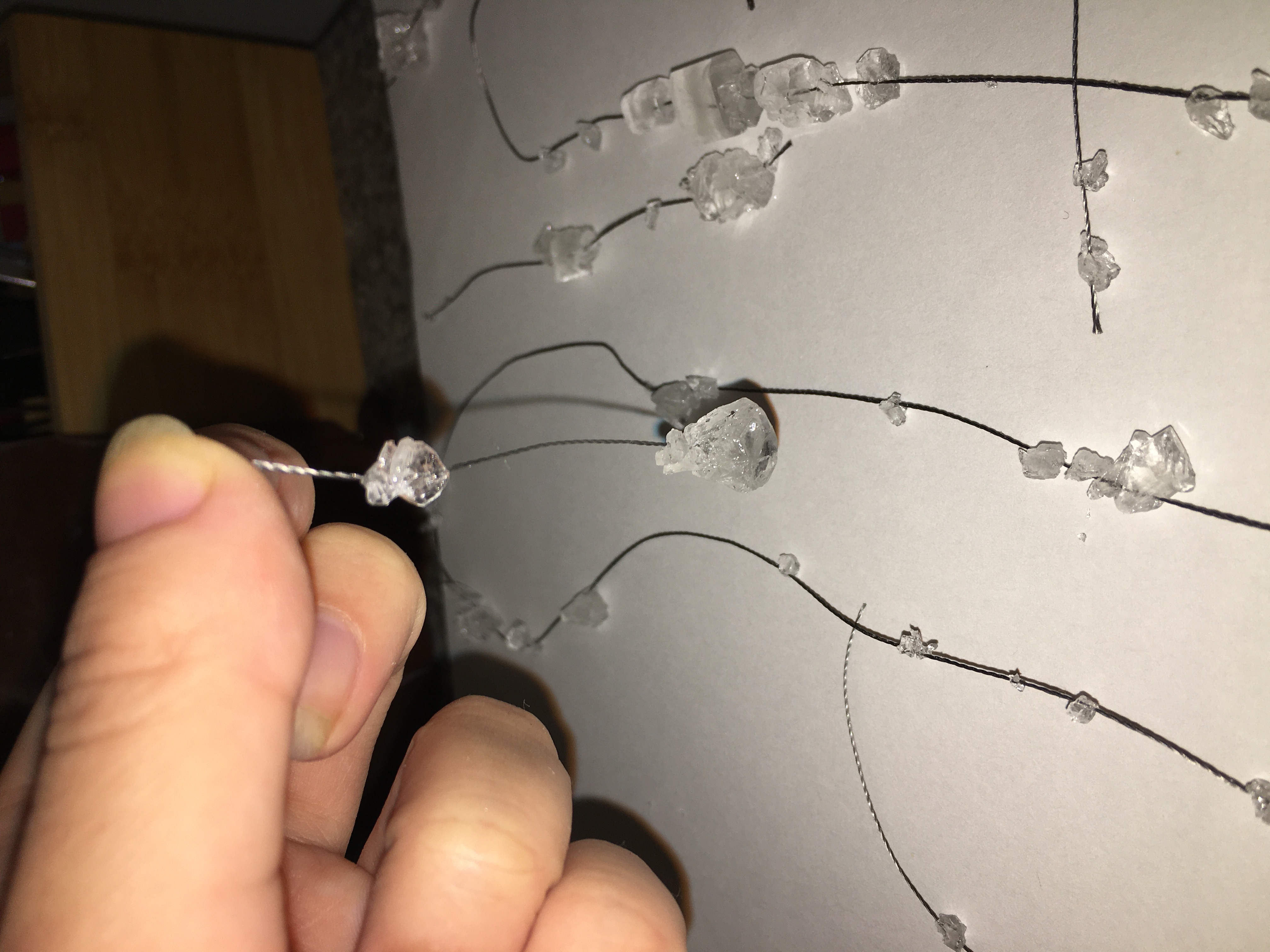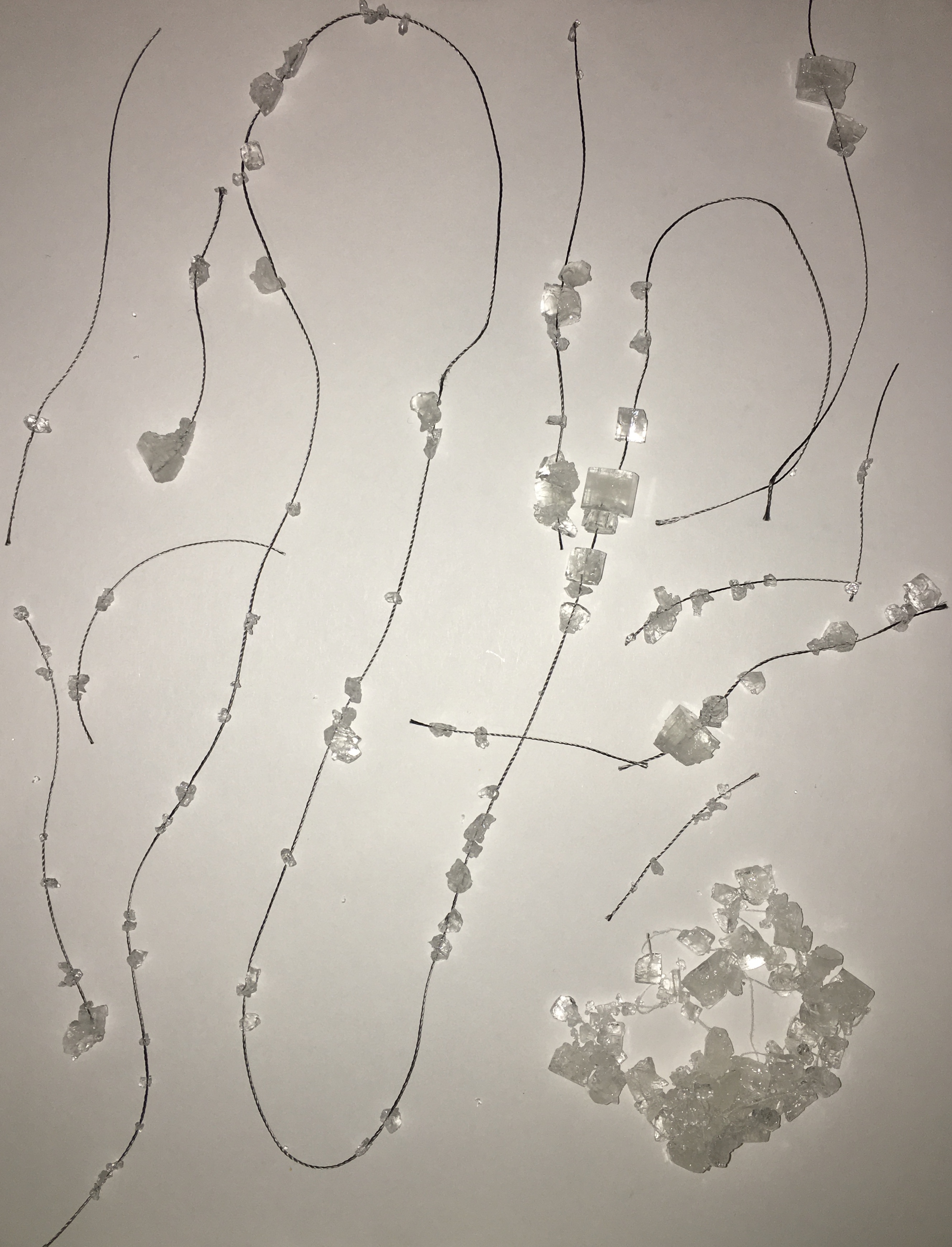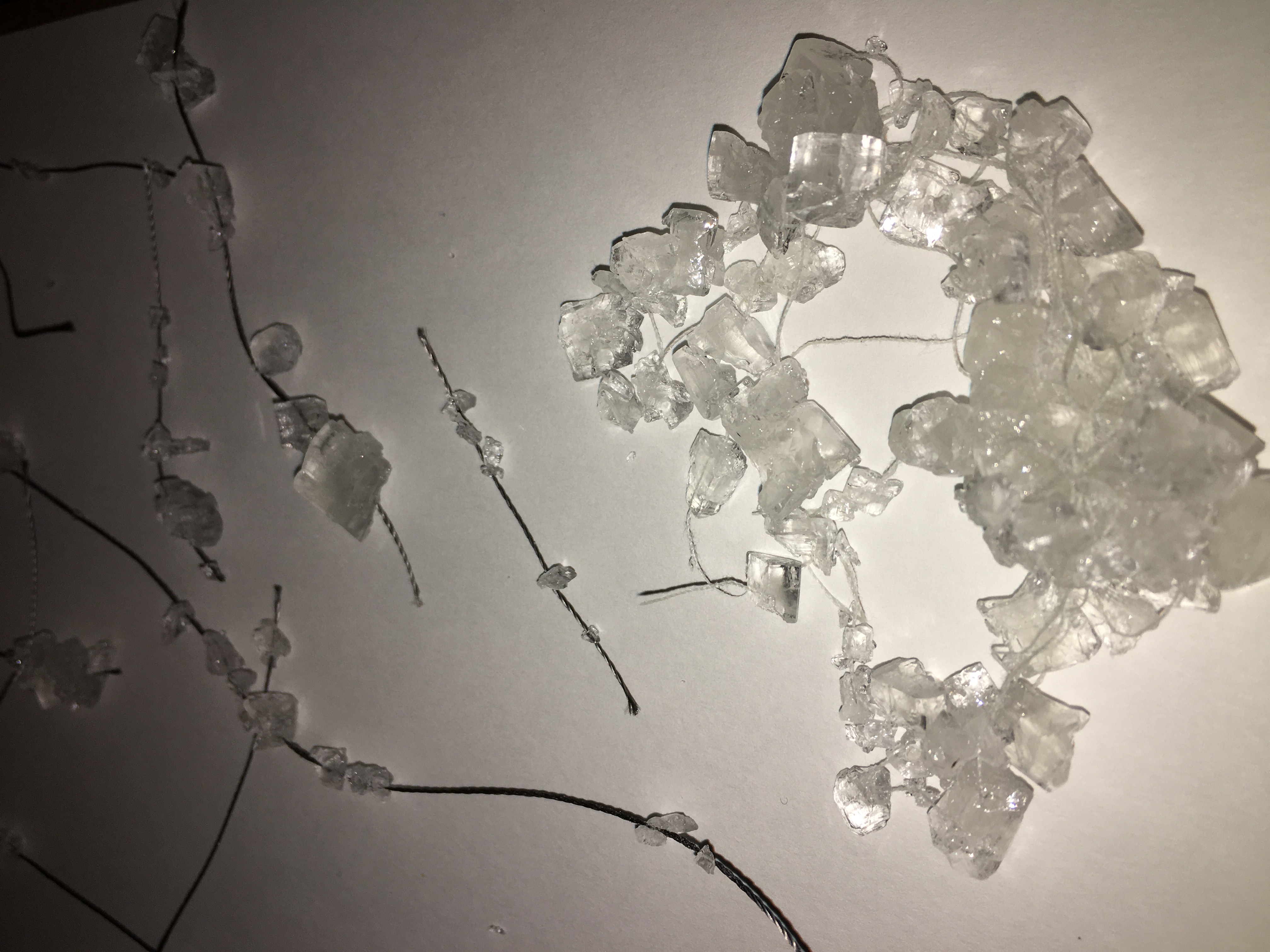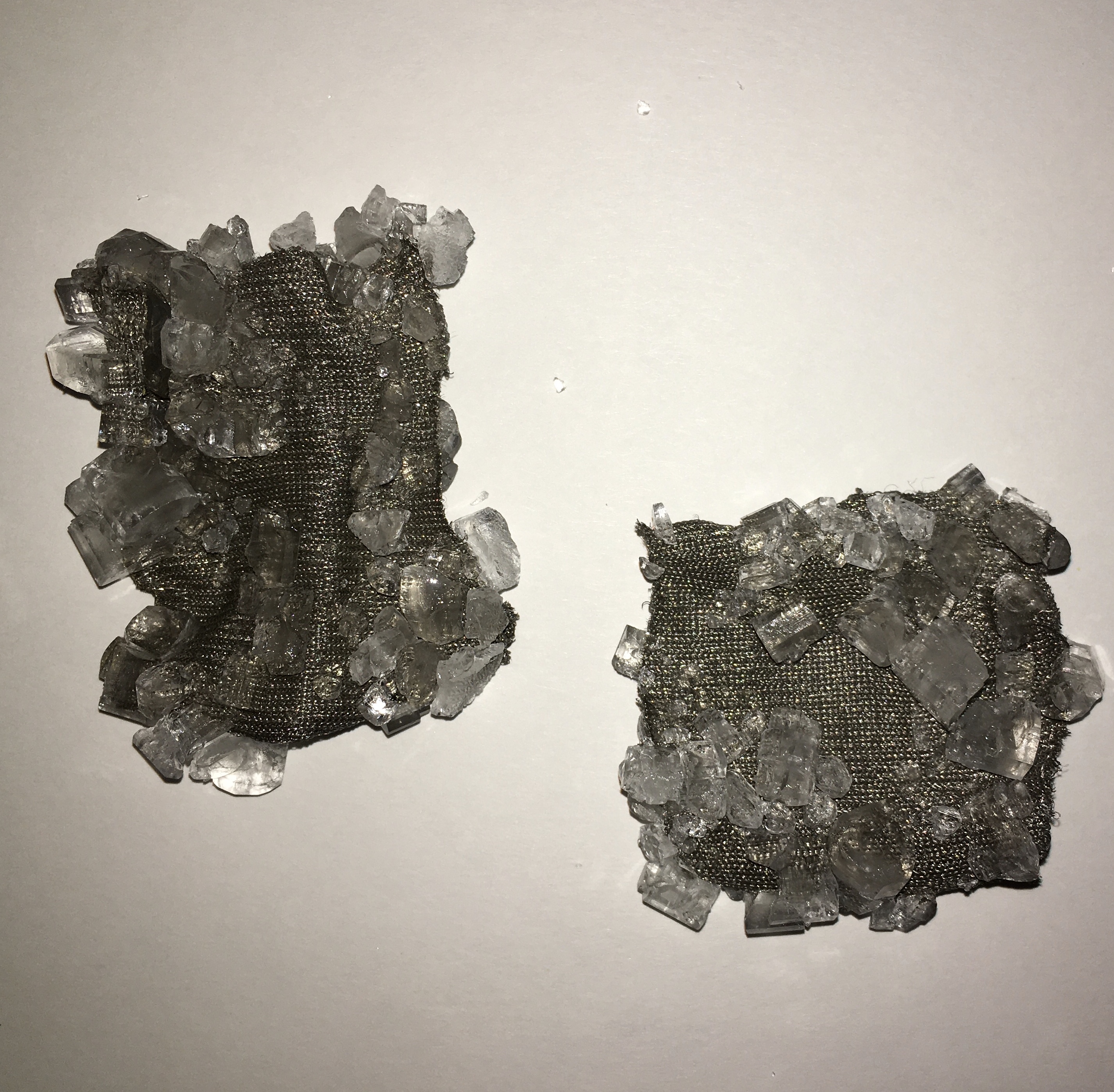9. Textile as scaffold¶
Textiles are so versatile in the ways they can be developed, used, and transformed into different textures, shades, structures, etc. This week, Textile as scaffold focuses on developing foundations to create/form these textures and challenge the dimension of textiles. I worked on using CNC Milling to mold leather and Crystallization onto textiles and threads.
CNC Milling¶
What is CNC Milling? How can it be used to mold leather?¶
CNC Milling is
Birth Chart Mold¶
During the lecture, I noticed a lot of the CNC milled molds were circular, bubble-like foundations, but I wanted to challenge that with a more dynamic, rigid mold. I had been thinking about astrology at the time, which inspired me to focus on astrology birth charts as a foundation. Birth charts use your birth time and birthplace to create a map of the planetary alignments and a person's many astrological placements. I did mine and noticed a bowl-like shape with a variety of triangular lines inside.
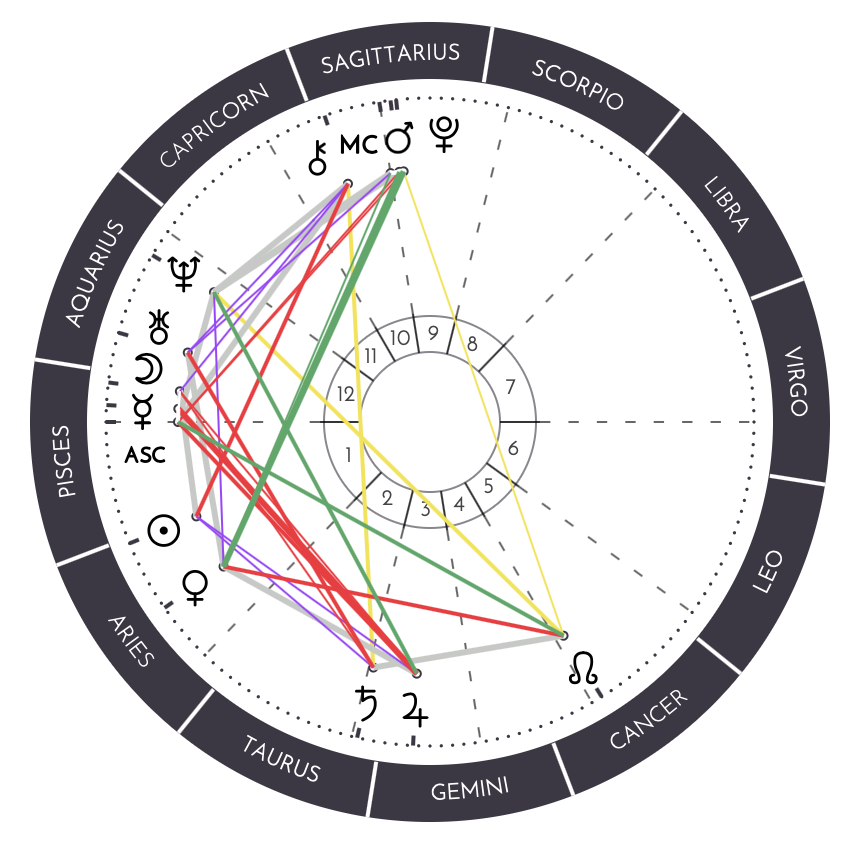
My line of thought became to develop a CNC mold, place these inner shapes at different heights, and form leather with it, potentially to be used in the future as a handbag or general art piece.
Development¶
To start, I used the image above as a foundation for point reference in Rhinocerous. I developed poly lines that resembled as best as they could the chart and create inner shapes.

I then took these polylines and developed a variety of different surfaces to exturde at different heights.
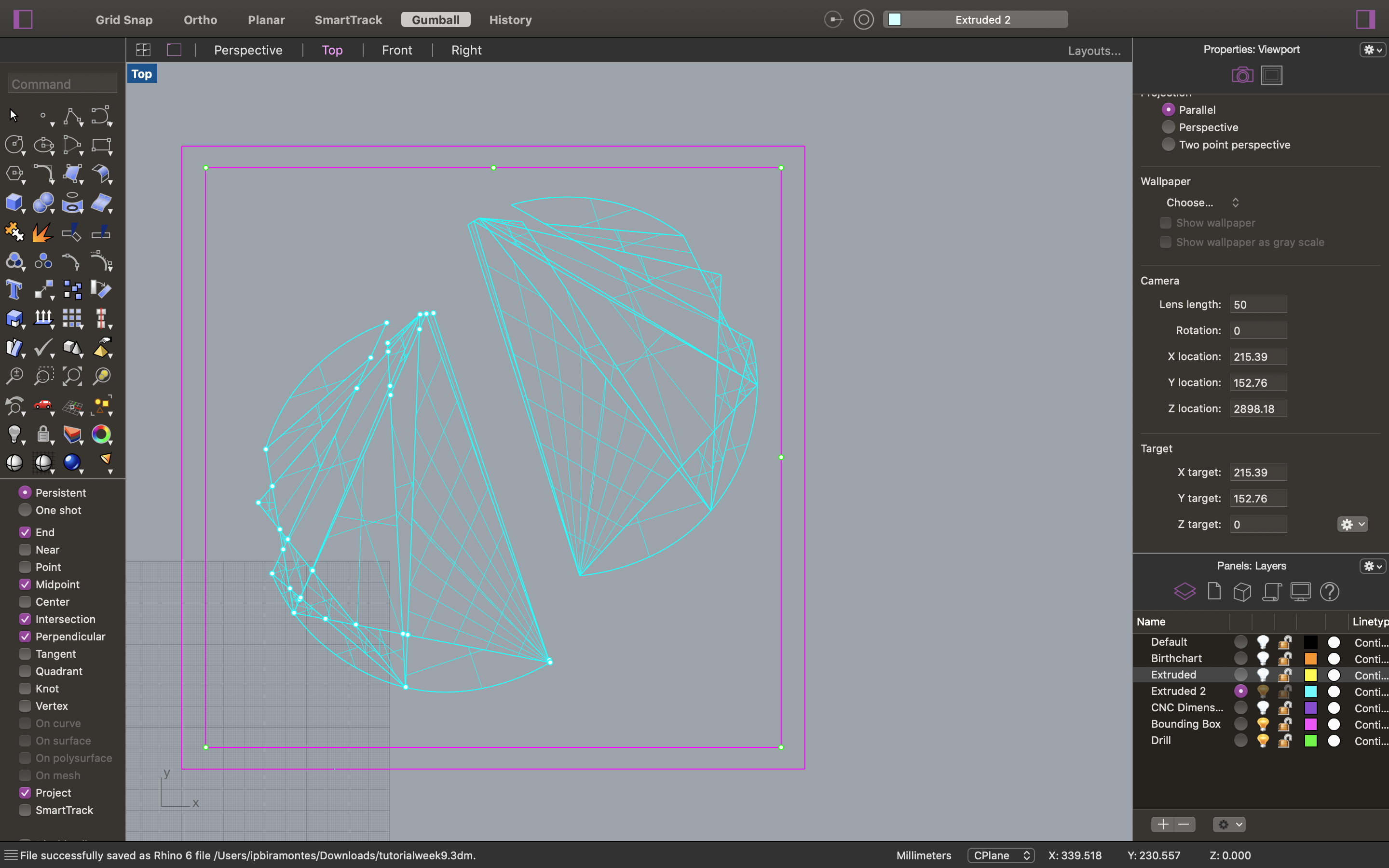
While I enjoyed the design, there was two different dimensions on top versus the bottom, as well as the design could have more details. I decided to create a second half circle design from the bottom.
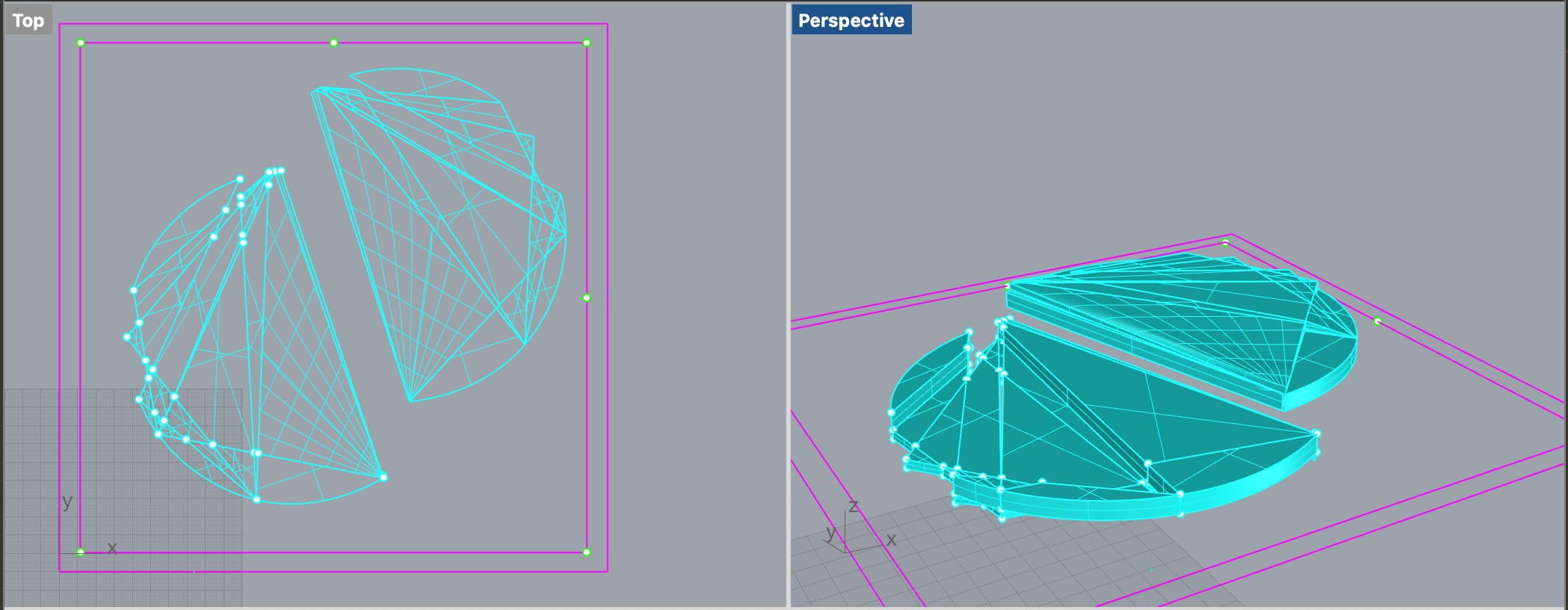
However, after hours of developing a design, there was massive issues with it's structure; there wasn't a flat bottom / workable base, and gaps, which even after being filled, created compilations. This delayed milling by a week because of the time needed to work through some technical issues on my laptop, develop a new design, and have lab time to use the CNC mill.
Crystallization¶
What is a Crystal?¶
A crystal is a solid material whose constituent atoms, molecules, or ions are arranged in orderly repeating patterns extending in all three spatial dimensions.
Piezoelectric crystals¶
In this week's lecture, piezoelectric crystals intrigued me because of their conductive properties. Given my background in work with conductive materials, I thought it would be fun to explore the capabilities of conductive crystals. Additionally, I wanted to explore if these crystals enhanced conductive thread and fabric beyond their aesthetics. This YouTube video helped guide me for this experiment.
Development¶
Materials¶
Soda Ash (≤ 2 CUPS) Pot
Cream of Tartar (14 TBL) Stove / Heat plate
Spatula
Bowl
Measuring spoons
After gathering materials, I set up my workspace and got straight into making the crystals. To start, in a pyrex, measure 1 cup of water and add 14 tablespoons of cream of tartar. Fill a pot with water and place the pyrex in the center, creating almost a double boiler. Bring the water to a simmer and begin adding soda ash. Add 1/2 Tsp of soda ash to the pyrex and observe the fizzing reaction. Wait for the reaction to end and add another 1/2 Tsp of soda ash.
I added the soda ash so many times I lost count of how many times, so it's important to note the amount isn't exact and, just like any experiment, factors such as heat chemical reaction time will vary from experiment to experiment.
This process is repeated until the mixture turns clear, the indicator it's ready to form crystals. Strain it through a coffee filter (this removes any extra soda ash) into a container for it to develop overnight, leave in a cool area.
At this point, I added cotton thread, conductive thread, and small swatches of conductive fabric with the hopes the crystals would form along them (almost like beads on a necklace).
Before¶
Final results¶
